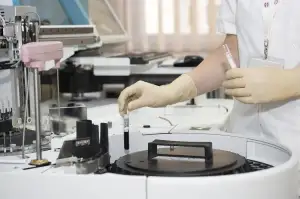Discover the Comfort and Healing Benefits of Soft Splints: Your Guide to Orthopedic Device for Optimal Health

Soft splints are orthopedic devices designed to provide support and stability to injured or weakened body parts. They are made from soft, flexible materials such as foam or fabric, which allows for a comfortable fit and ease of movement. Soft splints are commonly used in the treatment of musculoskeletal injuries, including sprains, strains, fractures, and post-surgical recovery. These versatile devices offer numerous benefits for orthopedic care and can greatly aid in the healing process. In this article, we will explore the various advantages of soft splints and how they can contribute to optimal health and well-being.
Benefits of Soft Splints for Orthopedic Care
Soft splints offer numerous benefits for orthopedic care. Firstly, they provide support and stability to injured joints and muscles, reducing pain and discomfort. This allows for better mobility and range of motion during the recovery process. Additionally, soft splints help to immobilize the affected area, preventing further damage or injury. They also promote proper alignment of bones and tissues, aiding in the healing process. Moreover, soft splints are lightweight and breathable, ensuring maximum comfort for the wearer. Overall, these orthopedic devices play a crucial role in facilitating a faster and more effective recovery from various musculoskeletal injuries.
Types of Soft Splints Available
When it comes to orthopedic care, there are various types of soft splints available to cater to different needs. One common type is the wrist splint, which provides support and immobilization for wrist injuries such as sprains or carpal tunnel syndrome. Another type is the ankle splint, designed to stabilize and protect the ankle joint in cases of strains or fractures. For knee injuries, a knee immobilizer can be used to restrict movement and promote healing. Additionally, there are soft splints specifically designed for fingers, thumbs, elbows, and even the neck. These different types of soft splints ensure that individuals receive targeted support and protection based on their specific injury or condition.
How Soft Splints Aid in Injury Recovery
Soft splints play a crucial role in aiding injury recovery. By providing support and immobilization to the affected area, they help reduce pain and swelling, allowing the injured tissues to heal properly. The gentle compression exerted by soft splints promotes blood circulation, which aids in the delivery of essential nutrients and oxygen to the injured area. Additionally, soft splints help prevent further damage by limiting movement and providing stability. This allows the body's natural healing process to take place more effectively, leading to faster recovery times.
Proper Usage and Maintenance of Soft Splints
Proper usage and maintenance of soft splints are crucial for ensuring their effectiveness in orthopedic treatment. Here are some guidelines to follow:
1. Correct Fit: It is essential to ensure that the soft splint fits properly on the affected area. A snug fit provides optimal support and stability, while avoiding excessive pressure or discomfort.
2. Follow Instructions: Always read and follow the manufacturer's instructions for wearing the soft splint. This includes the recommended duration of usage, whether it should be worn during specific activities, and any adjustments that need to be made.
3. Regular Cleaning: Soft splints can accumulate dirt, sweat, and bacteria over time. Clean them regularly according to the manufacturer's instructions using mild soap and water. Avoid using harsh chemicals or abrasive materials that could damage the splint.
4. Drying: After cleaning, allow the soft splint to air dry completely before putting it back on. This helps prevent moisture buildup and potential skin irritations.
5. Avoid Moisture Exposure: Keep the soft splint away from excessive moisture, such as rain or water immersion, as it may affect its structural integrity and hygiene.
6. Inspect for Damage: Regularly inspect the soft splint for any signs of wear and tear, such as fraying or weakening of materials. If you notice any damage, contact your healthcare provider or orthopedic specialist for advice on repair or replacement.
7. Store Properly: When not in use, store the soft splint in a clean and dry place away from direct sunlight or extreme temperatures. This helps maintain its shape and prolong its lifespan.
By following these guidelines for proper usage and maintenance of soft splints, you can ensure their longevity and maximize their benefits in your orthopedic treatment journey.
Frequently Asked Questions about Soft Splints
1. What are soft splints?
Soft splints are orthopedic devices made from soft materials such as foam or fabric. They are designed to provide support and immobilization to injured body parts, promoting healing and preventing further damage.
2. Who can benefit from using soft splints?
Soft splints can be beneficial for individuals with various orthopedic conditions, including fractures, sprains, strains, and tendonitis. They offer comfort and stability while allowing for some flexibility in movement.
3. Are soft splints adjustable?
Yes, most soft splints are adjustable to fit different body sizes and shapes. They often have Velcro straps or elastic bands that allow for a customized fit and easy adjustment as swelling decreases during the healing process.
4. Can soft splints be worn during sleep?
Yes, many soft splints are designed to be worn both day and night. They provide gentle support and protection even while sleeping, ensuring continuous healing without causing discomfort or hindering blood circulation.
5. How long should I wear a soft splint?
The duration of wearing a soft splint depends on the severity of the injury and the advice of your healthcare provider. It is important to follow their instructions regarding when to wear the splint and when it can be removed for rehabilitation exercises.
6. Can I wash my soft splint?
Most soft splints can be washed following the manufacturer's instructions. This helps maintain hygiene and prevent odor buildup. However, it is important to ensure that the splint is completely dry before wearing it again to avoid skin irritation.
7. Can I continue my daily activities while wearing a soft splint?
Soft splints are designed to accommodate daily activities while providing support and protection to the injured area. However, it is important to avoid activities that may put excessive strain on the injury or compromise its healing process.
In conclusion, soft splints offer numerous benefits for orthopedic care. They provide comfort, support, and immobilization to aid in injury recovery. By following proper usage and maintenance guidelines, individuals can experience optimal healing and regain their mobility faster.
In conclusion, soft splints play a crucial role in orthopedic treatment. They provide comfort and support to injured joints and muscles, promoting healing and preventing further damage. Soft splints are versatile and can be used for various conditions, from sprains and strains to fractures and post-surgical recovery. By immobilizing the affected area, they reduce pain, swelling, and inflammation. Additionally, soft splints are easy to use and maintain, making them an ideal choice for long-term orthopedic care. Whether you're an athlete recovering from an injury or someone dealing with chronic joint issues, soft splints can offer the comfort and healing benefits needed for optimal health.
Published: 28. 01. 2024
Category: Health



